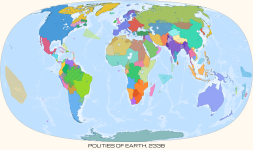XO🌈
An actual* satyr
- Location
- The agora of ideas
- Pronouns
- Whatever you want, darling
1980 · LOOKING AT THE BIG SKY · 2338
Szelena Holdt
Youre rightnow reading this article in Earthling English. Wanna switch to Industrial English?
Working a translation…
Szelena Holdt
Youre rightnow reading this article in Earthling English. Wanna switch to Industrial English?
Working a translation…
Szávay Szelena Holdt (born Kristóf Neil Holdt, 23 April 2021–11 December 2152) was the first person to be born beyond Earth’s atmosphere.
The earliest human colonies off Earth strictly controlled their inhabitants’ sexual intercourse and reproduction; it was thought at the time that the low-gravity environment might cause any children born in space to develop, at best, a weak bone structure and atrophied muscles, or at worst, developmental delays, severe deformities, and an average life expectancy of 2 or 3. Should any woman on the Moon (as they then called it) be found to be pregnant, she was to be given a medical exam and shipped off to Earth to avoid any further damage to the child.
Szelena’s parents — Villum Holdt, a Euroconian botanist, and Szávay Fruzsina, a Hungarian engineer — had every intent to comply with these provisions. They had enjoyed their time on Earth’s eighth continent, but seeing the same people every day breathing stale air in an endless grey expanse gets tiresome day after day, and it was certainly no place to raise a child. Fruzsina would go back to work in her home country’s burgeoning fusion industry; Villum would tend to his crops a few more months, then present his findings to a conference in Copenhagen. That was before the outbreak had spread to the eighth continent.
To this day, noöne is quite sure how orcov-19 hitched a wagon train to Selene; the Americans put the blame on the Russians’ lax medical checks, the Russians said the Europeans missed a spot during cleaning, and the Europeans thought the Americans shouldn’t have launched a shipment from their soil in the first place. But launch they did nevertheless, and from Chang’e to Galileo, Mother Earth’s children found that they weren’t going to visit her any time soon.
One week after Galileo lifted its lockdown, and fifty-two years after Apollo’s arrow first struck the lunar soil, the Holdts welcomed a beautiful baby boy to the world, and for the first time in a thousand million months, welcomed a world to its first beautiful baby boy. The prophecies of rickets and palsy and every disease under the sun fell flat; yes, baby Kiki was lankier and weaker than an Earthling preemie, but it was nothing that couldn’t be remedied with regular exercise and some daily vitamin pills.
The circumstances of Szelena’s birth lent her an unusual childhood, on which she wrote in her memoir, Overview: “My parents had named me after Armstrong, but sans any peers except the invisible boys and girls on the blue dot whither we prayed, i always felt more like a Collins — a Grissom or a Lovell on my bad days.” She performed well academically, netting a bachelors’ degree in European literature from Durham University’s Lunar Campus, but struggled to connect with others, sometimes contemplating “pricking a hole in my pressure suit and waiting for the inevitable”.
Szelena publicly came out as transgender in 2043. In her young adult years, she wrote marketing copy for firms as disparate as Helion Energy and Agrisol–Diana; she later became a public speaker and activist for Selenean sovereignty in the Lights On Party.
Starting circa 2139, she forwent life extension procedures, preferring “to go when it [was her] time to go”. Szelena died of old age in South Kubrick, to the south-west of Galileo, on the 11th of December, 2152, aged 131. She is one of only seven people to have been interred at the Abbey of Tranquility. Five space stations, two towns, one crater on Persephone, and a species of gengineered bat bear her name.
Last edited:






